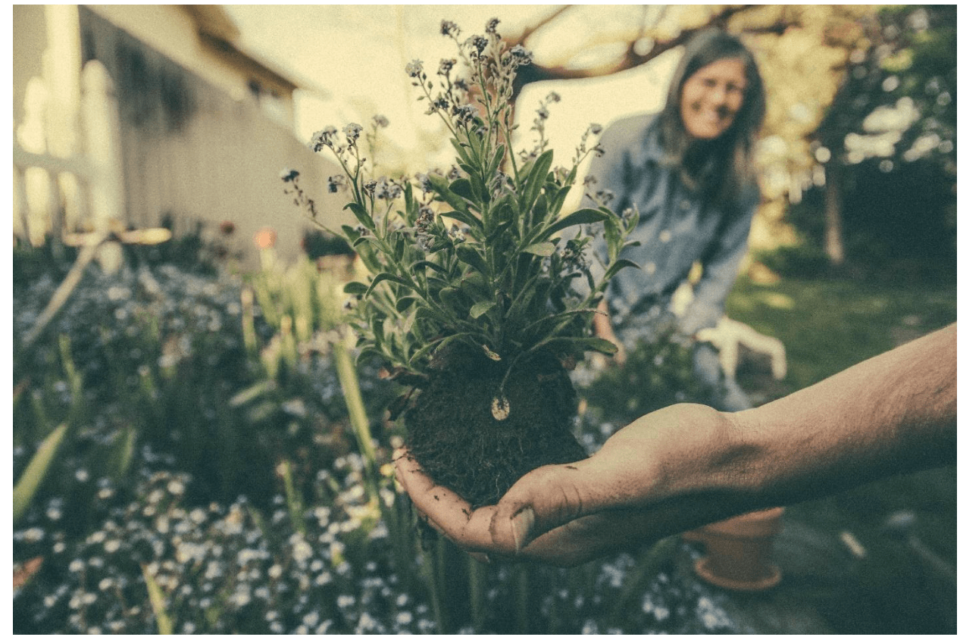Most people would agree that very few positive things have come out of the pandemic. At the very least it has been a time of transition, introspection, and quite literally, getting back to our roots. Interest in gardening has seen a huge upsurge since the beginning of the pandemic, and with good reason. Being forced to stay home has created the desire to not only make our home environment more aesthetically pleasing, but also more functional. Gardening positively impacts both of these areas of interest.
Now that restrictions are lifting, people are realizing that gardening can be an incredibly creative pastime that supports a great deal of innovation and ingenuity. As more and more individuals are opening themselves up to the art of gardening, they are discerning that it not only feeds the body, but it also feeds the soul.
Those of us who are relatively new to gardening, with trowel and spade in hand, are avidly generating five innovative blossoming trends. Each is worth considering and is dependent of your own personal time allotment availability and landscape. The only limits, of course, being your colorful imagination.
Of course, the first step in maintaining a quality garden of any variety is protection. It is always a mistake to believe that wildlife will leave your brilliantly planted, sweetly fragranced gardens alone, because they won’t. Deer, raccoons, skunks, rabbits, and other hungry four-legged creatures will make every effort to munch on the bounty of your garden. Deer fencing is a safe, reliable, and highly effective way to eliminate the threat to your garden from wildlife.
-
Peter Rabbit Style Gardens
Table of Contents
There isn’t much that’s cuter than Beatrix Potter’s Peter Rabbit, with his playful demeanor and avid love of nature. This friendly guy is beloved by millions around the world, and the gardens that he invades are all colorfully and beautifully imprinted in our minds. Creating a Peter Rabbit style garden is nostalgic for many gardeners. It creates a sense of comfort and relaxation that makes a house a home. Consider planting:
- Carrots
- Lettuce
- Rosemary
- Lemon Balm
- Snapdragons
- Violets
- Radishes
- Mint
- Lavender
-
Scenic Cottage Gardens
Even those who prefer the urban lifestyle, with an apartment on the 20th floor, can’t deny that the sight of a scenic cottage garden brings about a great feeling of calm, relaxation, and serenity. There’s just something about the quiet, woodsy cottage garden “feels”, with colorful blossoms flourishing in a non-regimented, almost whimsical way, that elicits daydreams and contentment. Consider planting:
- Lupins
- Delphiniums
- Poppies
- Foxgloves
- Geraniums
- Peonies
- Honeysuckle
- Red and White Aquilegia
- Vegetables suitable for your area
- Dianthus (Pinks)
-
Family-Sized Gardens
One thing the pandemic taught all of us is that there may be a time when we have to – indefinitely – rely on ourselves for our own sustenance. At the beginning of the pandemic, a trip to the grocery store was risky, and that’s even when they were actually open. Returning to a time when we must grow our own staples to provide for our family isn’t only healthy for the body; it also aligns us spiritually with nature, and helps curb our reliance on big industry and external vendors. Consider growing these staples for your family to harvest and eat throughout the year:
- Onions
- Potatoes
- Lettuce
- Tomatoes
- Corn
- Eggplant
- Kale
- Broccoli
- Cucumbers
-
Growing Plants from Seeds and Sprouts
Due to the pandemic being not only a medical and a health crisis, but also a financial one, another gardening trend is that more people are growing plants from seeds and sprouts. While it might take time to propagate them, and more care is certainly involved, there is also the abundant probability of greater personal fulfillment in cultivating plants from start to finish. Seeds may also be easily harvested via grocery store produce, or quite inexpensively from garden stores. Seeing the journey through, from seed, to plant, to the dinner table is quite the achievement, especially for those new to the art of gardening. Growing plants from seeds and sprouts can also be done any time of the year, by using tiny biodegradable peat pots. Inserting the seeds in good soil and placing them in a window that faces the sun, or if necessary, applying the assistance of grow lights, begins the kind of magic that only nature, with human effort, can provide.
Consider starting with:
- Lettuce
- Radishes
- Turnips
- Beans
- Chives
- Kale
- Bok Choy
- Broccoli
-
Soil Recycling
In the past, experts have cautioned against re-using soil. However, the pandemic also brought with it a shortage in potting soil mix, creating the necessity to develop a way to refurbish soil that in other years, may have been largely ignored as time-consuming or labor intensive. Gardeners are experimenting with making mixers of their old potting soil with new organic materials. This introduces essential nutrients into the mix. If you’re using soil from plants that have died off, make sure to completely remove the root system and foliage. You may also start a compost pile to collect the dead plants for decomposition and reuse. This will create a rich, new mixer into blend in.
Getting our hands into the soil, with thought, a plan, innovation, effort, and in ways that leave behind a re-enriched environment for future generations, is itself a growing global trend. Out of a pan-demic, has come the seed to feed everyone perpetually.

